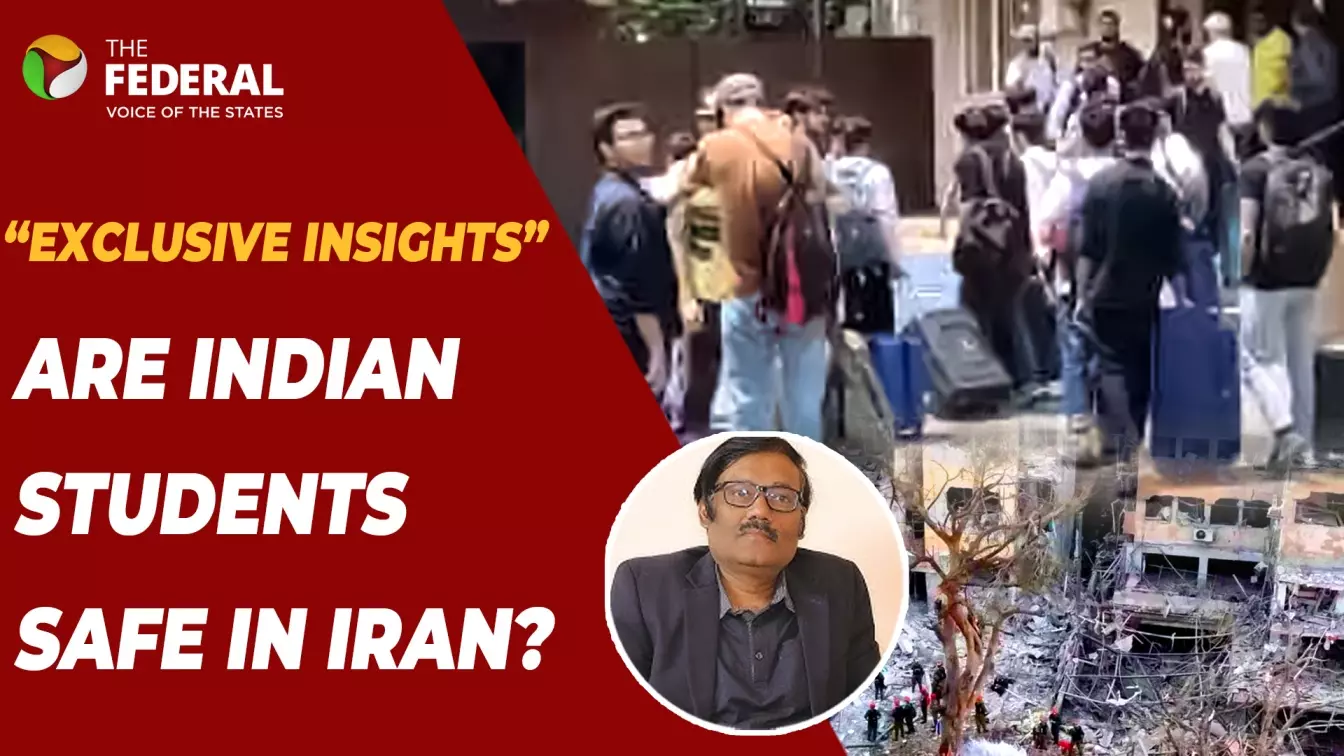
JNU professor Akhlaque Ahmad interview
Why are so many Indian students studying in Iran? What JNU professor Akhlaque Ahmed says
Are Indian students safe in war-hit Iran? JNU professor and Iran expert Akhlaque Ahmad shares his insights

With tensions escalating between Iran and Israel, concerns have risen over the safety of Indian students studying in Iran. In this interview with The Federal, Professor Akhlaque Ahmad from the Centre of Persian and Central Asian Studies at Jawaharlal Nehru University shares his insights on the situation, his communication with students, and the resilience of Iranians amid ongoing hostilities.
What has been your connection with Iran?
I’m a professor of Persian and Central Asian Studies, currently also the chairperson of the centre. My expertise goes beyond language and literature—I work on Iran’s history, culture, society, and contemporary developments. I’ve been to Iran several times for seminars, conferences, and for my own PhD research. I’ve travelled extensively across the country and know it well.
Why are so many Indian students studying in Iran? Which fields are they pursuing?
It’s not just Iran—Indian students are spread across Central Asia, especially in medical and engineering colleges. Whenever I travel via Tashkent airport, I see Indian students from Kyrgyzstan and Tajikistan.
Recently, the Vice-Chancellor of Samarkand Medical University in Uzbekistan told me that more than 3,000 Indian medical students had joined in the last 2–3 years. This surge started particularly after the war in Ukraine when around 20,000 Indian students had to return and couldn’t find support here.
So Iran and other nearby countries have become popular because they are affordable. The cost of education is much lower. What you spend in a year in India can often cover an entire course in these countries. That’s why many Indian students are studying in medical, engineering, and other programs in Iran.
Have you been in touch with Indian students in Iran after the current conflict started? What have they told you?
Yes, I’ve spoken to several students, especially those who studied at JNU and returned. Some of them were from my centre. When I asked how they were, they said they were fine—no major issues.
Despite media reports about people leaving Tehran, most students told me they were still there. Maybe only 1% had left. Iranians are used to internal travel, especially around weekends. Thursday and Friday are their holidays, so on Wednesday evenings, many head towards the northern regions. With war-related closures of schools and offices, this movement has increased.
As for Indian students in Tehran, many have shifted to safer areas with help from the Indian embassy. I was told over 1,000 students have been moved to other campuses or locations. Those wanting to return were advised to head to the Armenia border, where Indian officials are helping with repatriation. There’s no emergency panic; the situation is relatively calm.
Which areas are considered safer for students right now?
Primarily areas outside Tehran and in the northern parts of Iran. Generally, if you’re far from oil refineries, defence facilities, or other sensitive installations, it’s safer.
Have some students had to arrange their own movement or return?
Yes. Because the evacuation decision came very suddenly, and students are spread across Tehran, not everyone could be assisted immediately. The embassy advised Indian citizens, not just students, to move to safer areas on their own if they could. Those looking to return were guided towards Armenia’s border, where officials are helping. If someone is stuck or unable to move, the embassy has also shared emergency contact numbers for assistance.
When the attacks first happened, what did students tell you about the ground situation?
One of my PhD students, who lives in Tehran, sent me a message on the morning of the 10th. She said they woke up to the sound of a bomb being dropped in the city. People panicked. But even with continued bombing and hardships in some parts of Tehran, most residents—including students—stayed on. Iranians are incredibly resilient. They’re a great civilisation, and they’ve experienced long wars, like the eight-year war with Iraq. They’re used to hardship, so there's no widespread panic.
Why do you think there have been few public statements or videos from Indian students in Iran?
Most of them are young—many join these courses just after Class 12. They’re not very active on social media or connected to news channels. Initially, a few did speak up when they wanted to leave Tehran. But once the situation stabilised, the embassy responded swiftly and shared contact numbers.
Do you think authorities have asked students not to post on social media or speak out publicly?
Yes, that’s likely. It’s common during wartime. Israel has also restricted media coverage. Similarly, Iran may have issued instructions not to share sensitive information. That could explain the silence.
Final thoughts on the situation?
War is never a solution. It reflects a failure of humanity and the global community. We must hope that sanity prevails and the international community steps in to restore peace.
The content above has been generated using a fine-tuned AI model. To ensure accuracy, quality, and editorial integrity, we employ a Human-In-The-Loop (HITL) process. While AI assists in creating the initial draft, our experienced editorial team carefully reviews, edits, and refines the content before publication. At The Federal, we combine the efficiency of AI with the expertise of human editors to deliver reliable and insightful journalism.

